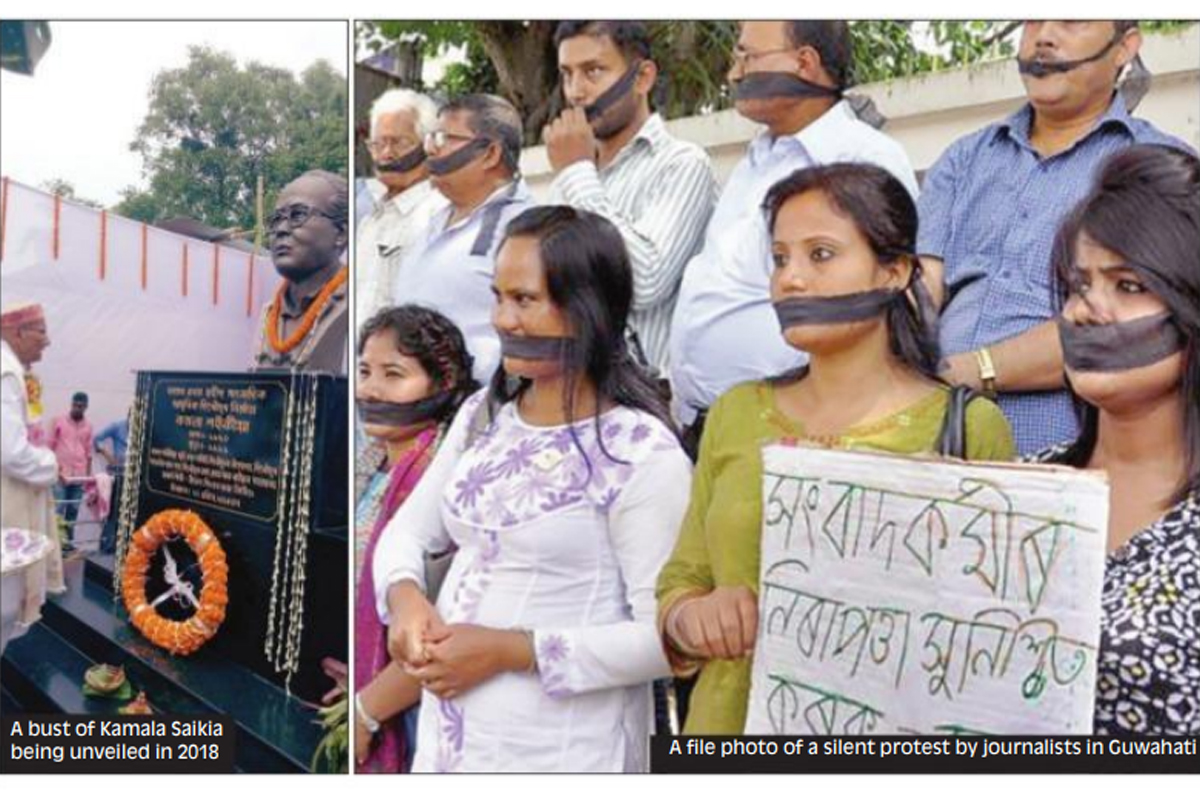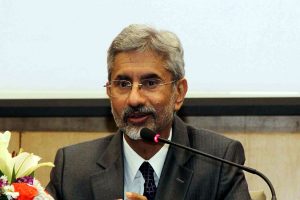For more than one reason, Northeast India remained a hazardous place for committed journalists irrespective of the regimes in power at different state capitals. The region used to witness the murder of around five media persons annually and Assam accounted for a major share of those victims.
The trouble-torn state has lost more than 30 editors/reporters/correspondents to assailants since 1991. The saga of journalist murders in Assam started with the assassination of veteran freedom fighter, teacher and journalist Kamala Saikia on 9 August 1991.
Advertisement
The 70-year-old locally influential Gandhian teacher was targeted by the United Liberation Front of Assam for his fierce criticism of the various disruptive activities of the banned militant outfit. The outspoken correspondent was dragged out of his house at Sivasagar Melachawk on the night of 9 August and his body was recovered the next morning on Jhanjee-Amguri road with severe wounds.
The Ulfa leaders, who chased an elusive dream of making Assam a sovereign nation, were angry with him for a series of articles, which was published in various-Guwahati based newspapers.
Saikia’s gruesome murder shocked the media fraternity of Assam and a crowded protest meeting was organised at Guwahati Press Club on 10 August. It was followed by a silent procession the next day, which is recognised as the first public outcry against the separatist militants. The media fraternity identifies Saikia as the first martyr journalist of the region.
Born in 1920 at a remote village named Goalgaon of Sivasagar district, Saikia was the oldest among seven children. He had his early education in Goalgaon Primary School and matriculated from Jhanjee High School. His college life started at JB College in Jorhat but could not be finished as he joined the freedom struggle on Mahatma Gandhi’s call.
In those days, he came in touch with veteran freedom fighters like Bimala Prasad Chaliha, Rabin Kakoty, Purnananda Chetia, Kedarnath Goswami, Prafulla Ch Baruah and Ramnath Das among others, and he finally decided to dedicate his life for society. He was deeply inspired by the Swadeshi movement and even installed manual spinning machines in his locality. Since then, he used to wear white khadi clothes in all public functions.
Soon after the murder, his family members lodged an FIR at Sivasagar police station and the state police carried on the investigation for seven years. But ultimately, the case was closed on 5 September 1998 citing insufficient evidence and witnesses. It simply stunned the media fraternity and provoked huge public fury in Assam.
Saikia’s family then appealed to the state government in Dispur to reopen the case. It was handed over to the Criminal Investigation Department, which too failed to prepare a charge sheet against anyone though the state investigative agency interrogated many people, including a few surrendered Ulfa militants namely Kushal Duori, Netra Chetia, Raja Mumin, Lalit Shyam, Baba Phukan, Uma Gogoi, Mohan Sarma, Indra Chetia, Chitra Dihingia, Rohini Khanikar and Robin Neog. Except Duori, alias Jayanta Hazarika, who was also elected to the Assam Legislative Assembly, all those militant leaders (questioned in connection with the case) either got killed in encounters or died.
The CID submitted its report in 2008 without convicting anyone and claimed that it could not gather conclusive evidence. Seeking justice, Saikia’s oldest son Dhananjoy filed a petition in Gauhati High Court on 27 June 2008. He claimed that Sivasagar police in its final report indicted Duori and four others for their involvement in the murder.
The higher court ordered a re-investigation (Case No: 291/91u/s302,365,3/4) and finally the police reopened the case. By that time, more than 30 editors, journalists and intellectuals had submitted a memorandum to then chief minister Tarun Gogoi on 3 August 2003. The Journalist Kamala Saikia Memorial Trust also sent a memorandum to Gogoi.
Even then Prime Minister Dr Manmohan Singh was approached to intervene in the matter. Dr Singh, who represented Assam in the Rajya Sabha, promised to speak with the state government. Recently, Saikia’ family along with the media fraternity in the state demanded a high level probe (preferably by the Central Bureau of Investigation) to inquire into the case.
The trust concerned, which organises an annual lecture on Saikia’s death anniversary, has also pushed for a probe. Other journalist victims include Punarmal Agarwala, Pabitra Narayan Chutia, Dipak Swargiary, Parag Kumar Das, Manik Deuri, Panja Ali, Nurul Haq, Ratneswar Sarma Shastri, Dinesh Brahma, Indramohan Hakasam, Prahlad Gowala, Bodosa Narzary, Mohammad Muslemuddin, Jagajit Saikia, Ranbir Roy, Bimala Prasad Talukder, and Anil Majumdar among others.
The daylight murder of human rights activist turned journalist Parag Das on 17 May 1996 in the heart of Guwahati created a massive public outcry. The executive editor of Asomiya Pratidin was seemingly targeted by surrendered militants as he used to write articles criticising them as well the Centre for its exploitative attitude towards Assam.
Lately the region has improved its journalist-murder index and except Tripura, evaded any such incident. Tripura reported the murder of three media persons (Sujit Bhattacharya, Ranjit Chowdhury and Balaram Ghosh) in 2013 and two scribes (Shantanu Bhowmik and Sudip Datta Bhaumik) in 2017. Assam and Manipur witnessed the murder of journalists (Raihanul Nayum and Dwijamani Nanao Singh) last in 2012.
But the quest continues as not a single perpetrator has been punished till date. With Saikia’s 29th death anniversary this Sunday, one only hopes his and the families of all other slain journalists in Assam find justice.
The writer is the Guwahati-based Special Representative of The Statesman











